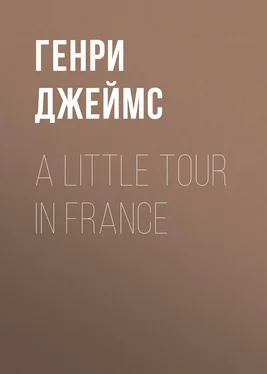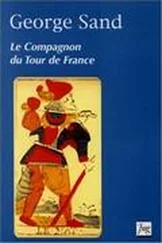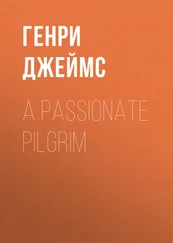Генри Джеймс - A Little Tour in France
Здесь есть возможность читать онлайн «Генри Джеймс - A Little Tour in France» — ознакомительный отрывок электронной книги совершенно бесплатно, а после прочтения отрывка купить полную версию. В некоторых случаях можно слушать аудио, скачать через торрент в формате fb2 и присутствует краткое содержание. Жанр: Путешествия и география, foreign_antique, foreign_prose, на английском языке. Описание произведения, (предисловие) а так же отзывы посетителей доступны на портале библиотеки ЛибКат.
- Название:A Little Tour in France
- Автор:
- Жанр:
- Год:неизвестен
- ISBN:нет данных
- Рейтинг книги:4 / 5. Голосов: 1
-
Избранное:Добавить в избранное
- Отзывы:
-
Ваша оценка:
- 80
- 1
- 2
- 3
- 4
- 5
A Little Tour in France: краткое содержание, описание и аннотация
Предлагаем к чтению аннотацию, описание, краткое содержание или предисловие (зависит от того, что написал сам автор книги «A Little Tour in France»). Если вы не нашли необходимую информацию о книге — напишите в комментариях, мы постараемся отыскать её.
A Little Tour in France — читать онлайн ознакомительный отрывок
Ниже представлен текст книги, разбитый по страницам. Система сохранения места последней прочитанной страницы, позволяет с удобством читать онлайн бесплатно книгу «A Little Tour in France», без необходимости каждый раз заново искать на чём Вы остановились. Поставьте закладку, и сможете в любой момент перейти на страницу, на которой закончили чтение.
Интервал:
Закладка:
V
The second time I went to Blois I took a carriage for Chambord, and came back by the Chateau de Cheverny and the forest of Russy, – a charming little expedition, to which the beauty of the afternoon (the finest in a rainy season that was spotted with bright days) contributed not a little. To go to Chambord, you cross the Loire, leave it on one side, and strike away through a country in which salient features be- come less and less numerous, and which at last has no other quality than a look of intense, and peculiar rurality, – the characteristic, even when it is not the charm, of so much of the landscape of France. This is not the appearance of wildness, for it goes with great cultivation; it is simply the presence of the delving, drudging, economizing peasant. But it is a deep, unrelieved rusticity. It is a peasant's landscape; not, as in England, a landlord's. On the way to Cham- bord you enter the flat and sandy Sologne. The wide horizon opens out like a great potager, without inter- ruptions, without an eminence, with here and there a long, low stretch of wood. There is an absence of hedges, fences, signs of property; everything is ab- sorbed in the general flatness, – the patches of vine- yard, the scattered cottages, the villages, the children (planted and staring and almost always pretty), the women in the fields, the white caps, the faded blouses, the big sabots. At the end of an hour's drive (they assure you at Blois that even with two horses you will spend double that time), I passed through a sort of gap in a wall, which does duty as the gateway of the domain of an exiled pretender. I drove along a straight avenue, through a disfeatured park, – the park of Chambord has twenty-one miles of circumference, – a very sandy, scrubby, melancholy plantation, in which the timber must have been cut many times over and is to-day a mere tangle of brushwood. Here, as in so many spots in France, the traveller perceives that he is in a land of revolutoins. Nevertheless, its great ex- tent and the long perspective of its avenues give this desolate boskage a certain majesty; just as its shabbi- ness places it in agreement with one of the strongest impressions of the chateau. You follow one of these long perspectives a proportionate time, and at last you see the chimneys and pinnacles of Chambord rise ap- parently out of the ground. The filling-in of the wide moats that formerly surrounded it has, in vulgar par- lance, let it down, bud given it an appearance of top- heaviness that is at the same time a magnificent Orien- talism. The towers, the turrets, the cupolas, the gables, the lanterns, the chimneys, look more like the spires of a city than the salient points of a single building. You emerge from the avenue and find yourself at the foot of an enormous fantastic mass. Chambord has a strange mixture of society and solitude. A little village clusters within view of its stately windows, and a couple of inns near by offer entertainment to pilgrims. These things, of course, are incidents of the political pro- scription which hangs its thick veil over the place. Chambord is truly royal, – royal in its great scale, its grand air, its indifference to common considerations. If a cat may look at a king, a palace may lock at a tavern. I enjoyed my visit to this extraordinary struc- ture as much as if I had been a legitimist; and indeed there is something interesting in any monument of a great system, any bold presentation of a tradition.
You leave your vehicle at one of the inns, which are very decent and tidy, and in which every one is very civil, as if in this latter respect the influence of the old regime pervaded the neighborhood, and you walk across the grass and the gravel to a small door, – a door infinitely subordinate and conferring no title of any kind on those who enter it. Here you ring a bell, which a highly respectable person answers (a per- son perceptibly affiliated, again, to the old regime), after which she ushers you across a vestibule into an inner court. Perhaps the strongest impression I got at Chambord came to me as I stood in this court. The woman who admitted me did not come with me; I was to find my guide somewhere else. The specialty of Chambord is its prodigious round towers. There are, I believe, no less than eight of them, placed at each angle of the inner and outer square of buildings; for the castle is in the form of a larger structure which encloses a smaller one. One of these towers stood before me in the court; it seemed to fling its shadow over the place; while above, as I looked up, the pinnacles and gables, the enormous chimneys, soared into the bright blue air. The place was empty and silent; shadows of gargoyles, of extra- ordinary projections, were thrown across the clear gray surfaces. One felt that the whole thing was monstrous. A cicerone appeared, a languid young man in a rather shabby livery, and led me about with a mixture of the impatient and the desultory, of con- descension and humility. I do not profess to under- stand the plan of Chambord, and I may add that I do not even desire to do so; for it is much more entertaining to think of it, as you can so easily, as an irresponsible, insoluble labyrinth. Within, it is a wilderness of empty chambers, a royal and romantic barrack. The exiled prince to whom it gives its title has not the means to keep up four hundred rooms; he contents himself with preserving the huge outside. The repairs of the prodigious roof alone must absorb a large part of his revenue. The great feature of the interior is the celebrated double staircase, rising straight through the building, with two courses of steps, so that people may ascend and descend without meeting. This staircase is a truly majestic piece of humor; it gives you the note, as it were, of Chambord. It opens on each landing to a vast guard-room, in four arms, radiations of the winding shaft. My guide made me climb to the great open-work lantern which, springing from the roof at the termination of the rotund staircase (surmounted here by a smaller one), forms the pinnacle of the bristling crown of Cham- bord. This lantern is tipped with a huge fleur-de-lis in stone, – the only one, I believe, that the Revolution did not succeed in pulling down. Here, from narrow windows, you look over the wide, flat country and the tangled, melancholy park, with the rotation of its straight avenues. Then you walk about the roof, in a complication of galleries, terraces, balconies, through the multitude of chimneys and gables. This roof, which is in itself a sort of castle in the air, has an extravagant, faboulus quality, and with its profuse ornamentation, – the salamander of Francis I. is a con- tant motive, – its lonely pavements, its sunny niches, the balcony that looks down over the closed and grass-grown main entrance, a strange, half-sad, half- brilliant charm. The stone-work is covered with fine mould. There are places that reminded me of some of those quiet, mildewed corners of courts and ter- races, into which the traveller who wanders through the Vatican looks down from neglected windows. They show you two or three furnished rooms, with Bourbon portraits, hideous tapestries from the ladies of France, a collection of the toys of the enfant du miracle, all military and of the finest make. "Tout cela fonc- tionne," the guide said of these miniature weapons; and I wondered, if he should take it into his head to fire off his little canon, how much harm the Comte de Chambord would do.
From below, the castle would look crushed by the redundancy of its upper protuberances if it were not for the enormous girth of its round towers, which appear to give it a robust lateral development. These towers, however, fine as they are in their way, struck me as a little stupid; they are the exaggeration of an exaggeration. In a building erected after the days of defence, and proclaiming its peaceful character from its hundred embroideries and cupolas, they seem to indicate a want of invention. I shall risk the ac- cusation of bad taste if I say that, impressive as it is, the Chateau de Chambord seemed to me to have al- together a little of that quality of stupidity. The trouble is that it represents nothing very particular; it has not happened, in spite of sundry vicissitudes, to have a very interesting history. Compared with that of Blois and Amboise, its past is rather vacant; and one feels to a certain extent the contrast between its pompous appearance and its spacious but some- what colorless annals. It had indeed the good for- tune to be erected by Francis I., whose name by itself expresses a good deal of history. Why he should have built a palace in those sandy plains will ever remain an unanswered question, for kings have never been obliged to give reasons. In addition to the fact that the country was rich in game and that Francis was a passionate hunter, it is suggested by M. de la Saussaye, the author of the very complete little history of Chambord which you may buy at the bookseller's at Blois, that he was govemed in his choice of the site by the accident of a charming woman having formerly lived there. The Comtesse de Thoury had a manor in the neighborhood, and the Comtesse de Thoury had been the object of a youthful passion on the part of the most susceptible of princes before his accession to the throne. This great pile was reared, therefore, according to M. de la Saussaye, as a souvenir de premieres amours! It is certainly a very massive memento; and if these tender passages were propor- tionate to the building that commemorates them, they were tender indeed. There has been much discus- sion as to the architect employed by Francis I., and the honor of having designed this splendid residence has been claimed for several of the Italian artists who early in the sixteenth century came to seek patronage in France. It seems well established to-day, however, that Chambord was the work neither of Primaticcio, of Vignola, nor of Il Rosso, all of whom have left some trace of their sojourn in France; but of an obscure yet very complete genius, Pierre Nepveu, known as Pierre Trinqueau, who is designated in the papers which preserve in some degree the history of the origin of the edifice, as the maistre de l'oeuvre de maconnerie. Behind this modest title, apparently, we must recognize one of the most original talents of the French Renaissance; and it is a proof of the vigor of the artistic life of that period that, brilliant pro- duction being everywhere abundant, an artist of so high a value should not have been treated by his con- temporaries as a celebrity. We manage things very differently to-day.
Читать дальшеИнтервал:
Закладка:
Похожие книги на «A Little Tour in France»
Представляем Вашему вниманию похожие книги на «A Little Tour in France» списком для выбора. Мы отобрали схожую по названию и смыслу литературу в надежде предоставить читателям больше вариантов отыскать новые, интересные, ещё непрочитанные произведения.
Обсуждение, отзывы о книге «A Little Tour in France» и просто собственные мнения читателей. Оставьте ваши комментарии, напишите, что Вы думаете о произведении, его смысле или главных героях. Укажите что конкретно понравилось, а что нет, и почему Вы так считаете.












